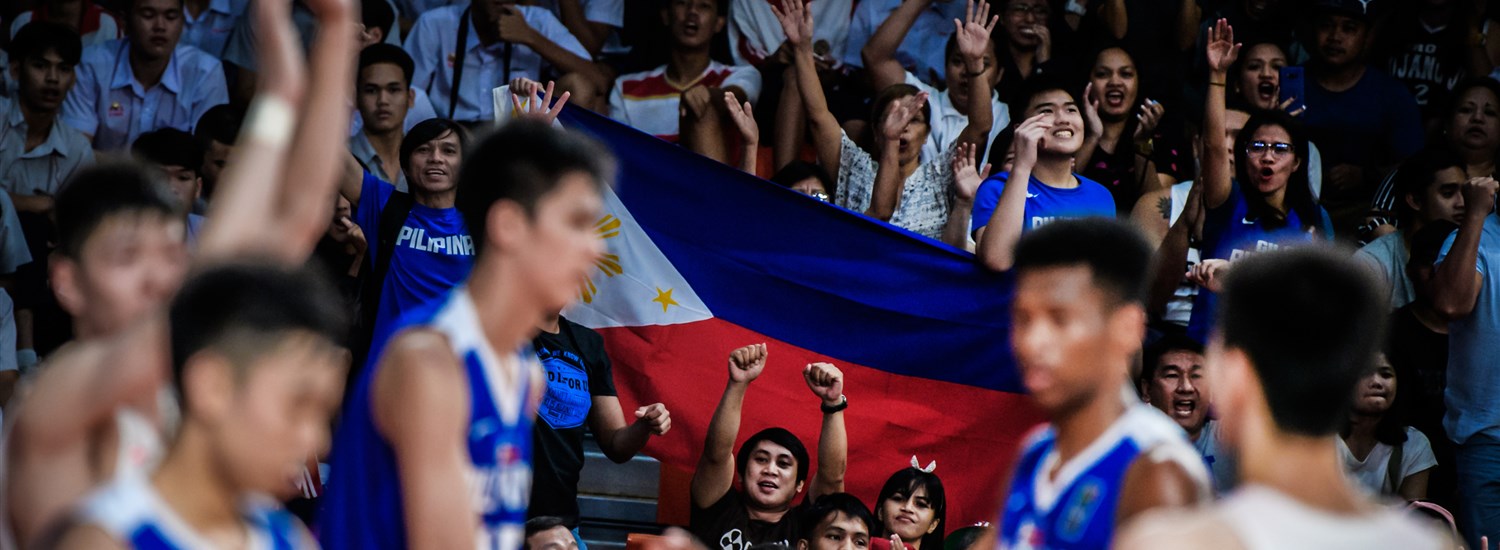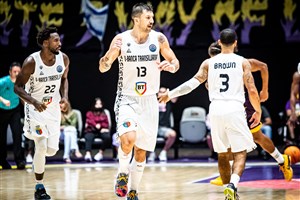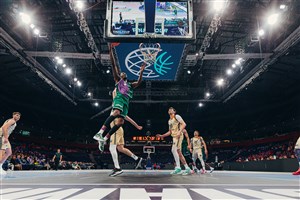
Youth hoops during the pandemic | Philippines hopeful for long-awaited return of youth game
Once a month, this column will be dedicated to looking at how an individual country dealt with the worldwide pandemic surrounding Covid-19 and what steps they are taking to avoid youngsters missing out on development.
REGENSBURG (David Hein's Eye on the Future) - The Philippines - during the Covid-19 pandemic - has been a challenging place to be for a basketball prospect. Neither the country's federation nor the schools could really do too much to help them, and the leaders of the Gilas youth program are anxiously awaiting to come out of a lockdown and assess the impact this has had on their future talents.
Signs apparently are looking good that youth basketball in the country can slowly start back up, at least that’s the hope passed along by Sandy Arespacochaga, the head coach of the Gilas U16 and U18 national teams.
"We in the youth program expect slowly but surely to begin again," he said. "We're just excited about the possibility of playing basketball again at the youth level, getting back on track."
"Begin again" regretfully might not be far off in many regards for a country that had really been hitting its stride in youth development.
Philippines competed at the FIBA U17 Basketball World Cup 2014 and 2018 and also played at the FIBA U19 Basketball World Cup 2019 - the first appearance at that event since 1979.
Then came initial organizational uncertainty at the FIBA Asia level with the FIBA U16 Asian Championship unable to be played in 2019 and planned for 2020. Then of course came the pandemic, which wiped out the make-up U16 Asia tournament as well as the FIBA U18 Asian Championship 2020.
One could argue Philippines could have qualified from both competitions to reach the U17 and U19 World Cups, respectively.
Francis Lopez and Mason Amos would have spearheaded the U16 effort while Kai Sotto, Raven Cortez, Joshua Lazaro and Rence Padrigao would have provided a solid core that could have fought for a top-four spot at the U18 level.
Instead, the FIBA World Rankings, Presented by Nike for Youth Men were used to determine Asia's teams for the FIBA U19 Basketball World Cup 2021, meaning the Philippines did not make it.
Nothing allowed
Once the pandemic hit, Filipino youth basketball was stopped entirely. No college or high school basketball. Essentially, a pause button was pressed in March 2020, and it has yet to be released.
The Philippines follows the United States model with school-based youth leagues at both high school and college levels - and not club basketball like many other places. Both were able to finish the 2019-20 season, but the 2020-21 seasons were wiped out.
It looks like the collegiate 2021-22 season will be played, but high schools won't be allowed to resume in the next few months. The current high school generations would be some 2003-born players but mostly those from 2004 to 2006. In terms of youth basketball below the high school level, there are only very small and local organizations in the Philippines.
Not just games were wiped out but all on-site practice as well - no formal practices have taken place since March 2020. Instead just online training sessions via Zoom or Google Meet.
 Coach Sandy Arespacochaga
Coach Sandy Arespacochaga
No school could even call for physical practices - not even individual workouts with one player outside, or even a shoot-around with a coach. If a school official calls for practice they could be held accountable for that, one coach told Eye on the Future.
Arespacochaga said it is important that an increased number of young people are getting vaccinated.
"This will really help a lot to have normal practice sessions hopefully soon. We believe it's just a matter of time," he said.
Not good for youth program
Arespacochaga said the last time the Philippines youth team practiced was in February 2020.
"It's been a long time. Missing basketball really is not good for the youth program and our players. They should be getting trained and taught the fundamentals of basketball. That will help them elevate their game to the next level - be it internationally or in the local tournaments in the country."
Arespacochaga and his staff have not had it easy trying to keep track of the country's 2005 and 2006 generations. A FIBA U16 Asian Championship was supposed to take place in 2021, though it could be postponed to next year.
Still, it remains unclear what kind of team Philippines could put together considering there have been no call-ups or training camps with those players. The coaches have a list of top talents but they haven't called anybody up because no training camp has been planned.
In essence, the federation - along with the schools - are left relying on the young players themselves to keep in shape and continue their skills development.
Focus on teaching coaches
With little on-site contact possible to the players, the federation has shifted its focus to the coaches with webinars. Those Zoom meetings should teach skills to coaches, who are then expected to pass along all of the things they've learned to the players at their local level.
Arespacochaga actually sees this step as a positive aspect of the pandemic.
"A lot of emphases was put on coaches' development by the federation. That is very important in regards to player development," he said.
 FIBA U19 Basketball World Cup 2019 - the last time a Philippines youth team competed
FIBA U19 Basketball World Cup 2019 - the last time a Philippines youth team competed
The federation has provided coaches nationwide with coaching videos to learn how to better work with their players.
"We recognize that improving the coach's knowledge nationally will also help develop players for us who will be ready to perform," Arespacochaga said.
In terms of which age group Arespacochaga is most worried about at the moment, he said the players from 14 to 18 years old.
"This age is very crucial in terms of acquiring good habits, learning fundamentals, going out to practice every day. It's different if you just practice your skills - dribbling or shooting individually. It's different if you learn how to play with other people together as a team," he said.
"A lot of emphases has been put on individual skills, but basketball is a sport played with four other players on the court. The team concept in terms of thinking as part of a collective has really suffered during this pandemic. That's very important for us. We have been trying to come up with the best team possible - not just the best collection of talent. That is still going to be a very big emphasis for us moving forward."
Arespacochaga doesn't think it will take long for him to see his players' deficiencies - once he's able to finally work with them again.
"I think we can see the impact of the pandemic right away. I think it will take a month or two for them to get their timing and conditioning back. It's a shame we lost all this time for the players to train and play and develop."
Arespacochaga and his federation colleagues are still kind of in the dark as to what awaits them when they finally are able to work with their players again. But they can't wait to see where they are and when starting to work directly with the players again.
FIBA
David Hein
FIBA's columnists write on a wide range of topics relating to basketball that are of interest to them. The opinions they express are their own and in no way reflect those of FIBA.
FIBA takes no responsibility and gives no guarantees, warranties or representations, implied or otherwise, for the content or accuracy of the content and opinion expressed in the above article.


















